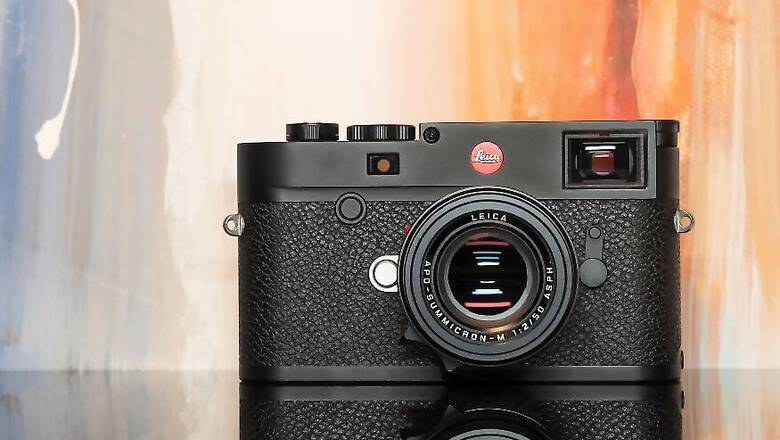
views
The Leica M10-R was unveiled last week, making this the fifth camera in Leica’s vaunted M10 flagship camera series. As with every Leica camera, global premieres are typically greeted with an interesting mix of awe and measured criticism in terms of what the camera would offer. With the M10-R, Leica has paid heed to some of its finest criticisms, and at the centre of it all is a 40-megapixel sensor that now shoots in colour. Not only this – Leica has made a number of changes, to bring together the best features from all Leica M10 series cameras.
To begin with, the Leica M10-R features a 40-megapixel full frame image sensor, which implements the same design that the Leica M10 Monochrom’s 40-megapixel black and white image sensor used. The M10-R adds a bayer filter to that, making the M10-R now shoot in full colour. As a result, this adds an additional 16-megapixel resolution to the effective resolution that was available in the Leica M10, M10-P and M10-D – each of the three used a 24-megapixel full frame sensor. The latter faced some amount of criticism due to their overall offerings in terms of fine detail production, colour accuracy and dynamic range, particularly since other, competing full frame sensors from the likes of Sony did offer better comparative performance.
With the M10-R, Leica is likely looking to answer exactly this. The additional resolution, Leica states, will help the M10-R improve its low light performance, as well as dynamic range. The latter two aspects will reportedly be closer to the M10 Monochrom now, which employed the same sensor design. This can be mighty important for Leica – in the full frame mirrorless camera space, Sony has a considerable stronghold in terms of their feature offerings. As a result, the Leica M10-R directly addresses the need for more resolution, higher colour range and accuracy, and greater details – something that the previous colour-shooting M10 cameras failed to offer.
Native ISO range of the Leica M10-R is between ISO 100 and ISO 50,000 – the same as previous Leica M10 series cameras. However, Leica says that due to the new sensor, the M10-R will perform better in low light. It gets extended long exposure time of 16 minutes at ISO 100 – something that night-time nature photographers would particularly appreciate. To help you take such shots, Leica has also thrown in its silent shutter technology that was premiered with the Leica M10-P, into the M10-R. This minimises the in-body camera vibrations that occur due to the shutter, hence reducing chances of camera shake.
The updated Leica M10-R full frame rangefinder mirrorless camera thereby brings together all the highlight features of the M10 series – it even has a touchscreen LCD display to make operations easier. The camera will be shipped to India and sold from August, at Rs 6,95,000 for the camera body. Leica recommends that you buy the newest generation Leica lenses to make the most of the higher resolution of the camera, but older M-system lenses would also work great as well. Unless you’re looking at the M10-R to be your first Leica, chances are that you have a number of Leica’s high precision lenses, already.
















Comments
0 comment